Discover 11 hidden attractions, cool sights, and unusual things to do in Richmond (United States). Don't miss out on these must-see attractions: Richmond Art Museum, Earlham College Observatory, and Old Richmond Historic District. Also, be sure to include Reid Memorial Presbyterian Church in your itinerary.
Below, you can find the list of the most amazing places you should visit in Richmond (Indiana).
Table of Contents
Richmond Art Museum

Art museum in Richmond, Indiana. The Richmond Art Museum was founded in 1898 as the Art Association of Richmond, Indiana. Artist John Elwood Bundy and author and attorney William Dudley Foulke were instrumental in the founding.[1]
Address: 350 Hub Etchison Pkwy, 47374-5339 Richmond
Earlham College Observatory
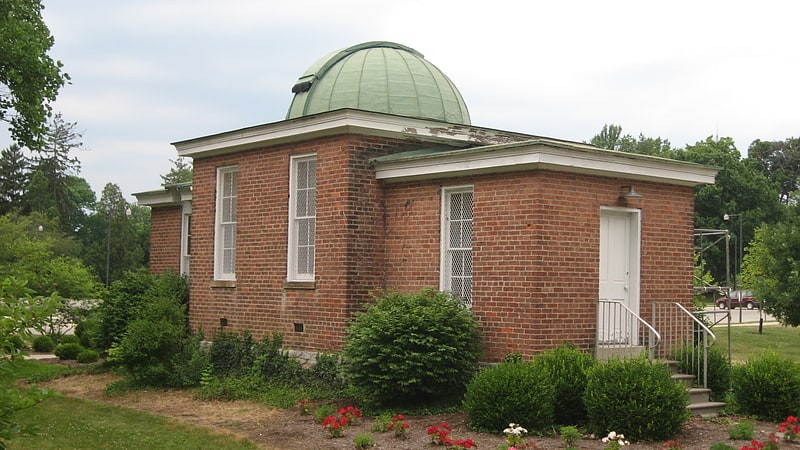
Observatory in Richmond, Indiana. Earlham College Observatory is a historic observatory building located on the campus of Earlham College at Richmond, Wayne County, Indiana. It was built in 1861, and is a one-story, brick building with a hipped roof. It consists of a 19-foot-square central section topped by a copper dome with a removable section, and flanked by 10-foot by 19-foot sections. Beneath the revolvable dome is a 6+1⁄2-inch objective lens telescope located in the center of the main block.
It was listed on the National Register of Historic Places in 1975.[2]
Address: 801 National Rd W, Richmond
Old Richmond Historic District
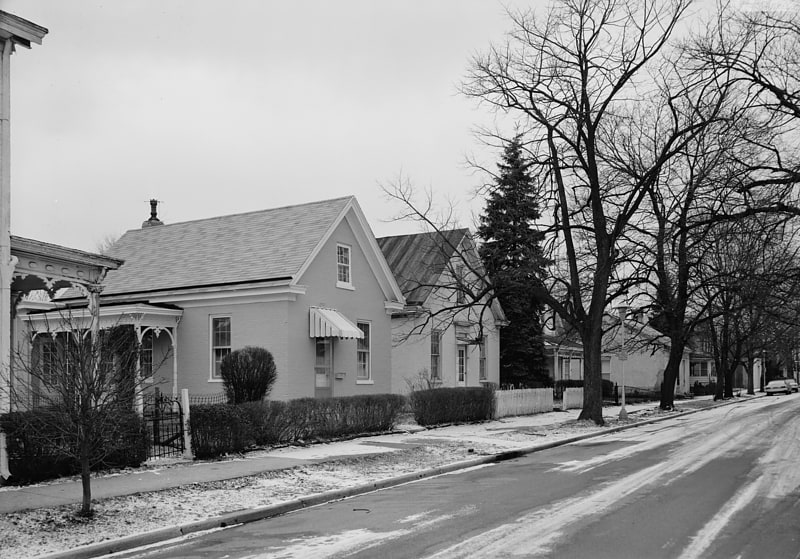
The Old Richmond Historic District is a neighborhood of historic residential and commercial buildings and national historic district located at Richmond, Wayne County, Indiana. The district encompasses 212 contributing buildings located just east of the East Fork of the Whitewater River, comprising some of the earliest extant buildings in Richmond. It developed between about 1816 and 1925 and includes representative examples of Greek Revival, Italianate, and Gothic Revival style architecture. Located in the district is the separately listed Bethel A.M.E. Church. Other notable contributing buildings include the William Paul Quinn House, Elijah Coffin House, Henry Davis House, Rankempf Cottage, Hall Town House, Edward Frauman House, and Lydia Pierce Cottage.
The district was added to the National Register of Historic Places in 1974 and expanded in 2003.[3]
Reid Memorial Presbyterian Church
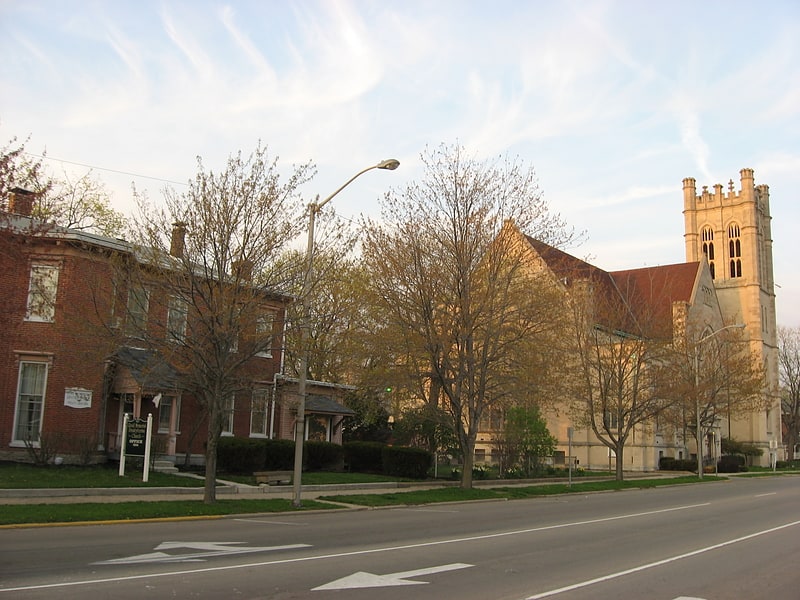
Building in Richmond, Indiana. Reid Memorial Presbyterian Church is an architecturally significant building located at 11th and North "A" Streets in Richmond, Indiana. Designed by the Cleveland, Ohio architectural partnership of Sidney Badgley and William H. Nicklas the building was begun in 1904 and dedicated on May 13, 1906. The building committee had visited the Badgley and Nicklas-designed St. Paul's Methodist Episcopal Church which had been built by the Clement Studebaker family in South Bend, Indiana and the two churches have strikingly similar design elements in the sanctuaries. Reid Church was paid for by Daniel G. Reid in memory of his parents Daniel Reid and Anna Gray Reid. The church interiors and windows were designed by Louis Comfort Tiffany and the Tiffany Studios. The original organ designed by Hook and Hastings is still in use, though it was rebuilt in 1958 by the Wicks Organ Company. The organ was featured with a recital during the Organ Historical Society's 2007 convention in Indianapolis.
During the 1920s the Ku Klux Klan was a powerful political and social force in Indiana. In 1922 the Klan was introduced to Richmond by Robert Lyons, who began by recruiting at Reid Church, where his father, Samuel Ross Lyons (1849 – 1915), had been pastor years earlier. Robert Lyons was eventually appointed national chief of staff for the Klan.
Membership having dwindled to a few dozen people, the congregation was dissolved November 5, 2017, and the church closed. The building has been listed on the "Ten Most Endangered List" of Indiana Landmarks since 2019.[4]
Address: 1004 N A St, 47374-3153 Richmond
Wayne County Courthouse
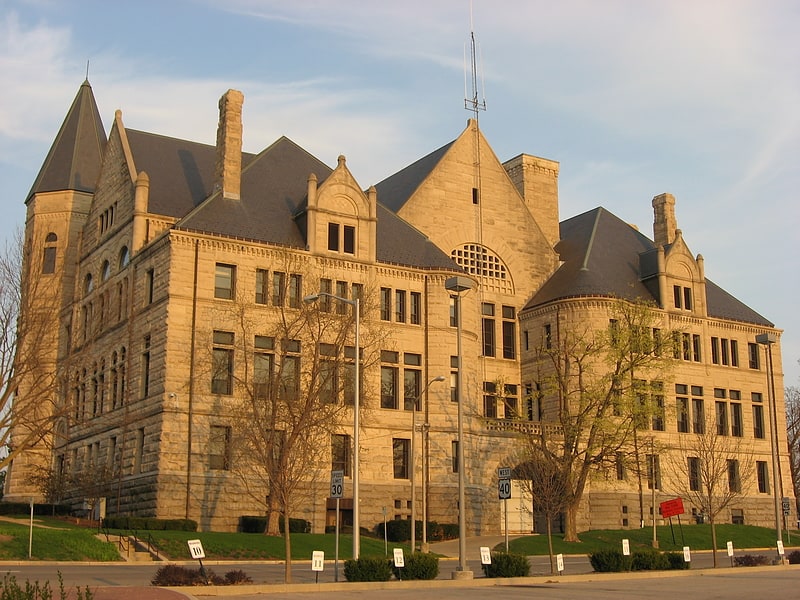
Courthouse in Richmond, Indiana. The Wayne County Courthouse is a historic courthouse located in Richmond, Wayne County, Indiana. It was built during the period 1890–93, and is in the Richardsonian Romanesque style. The building was designed by Cincinnati, Ohio, architect James W. McLaughlin and the construction was supervised by New Castle, Indiana, architect William S. Kaufman. The "U"-shaped building measures approximately 214 feet by 128 feet, and is constructed of brick faced with Indiana Limestone. It features a projecting entrance pavilion, high pitched hipped and gable roofs, large semicircular arches, and octagonal corner tower. Architectural historians Michael Tomlan and Mary Raddant-Tomlan have suggested that the Wayne County Courthouse was influenced both in terms of exterior design and elements of interior layout by Henry Hobson Richardson's Allegheny County Courthouse in Pittsburgh, Pennsylvania.
It was listed on the National Register of Historic Places in 1978. It borders the northern boundary of the Old Richmond Historic District which includes some of Richmond's earliest extant architecture.[5]
Address: 301 E Main St, 47374-4253 Richmond
Richmond Rose Garden
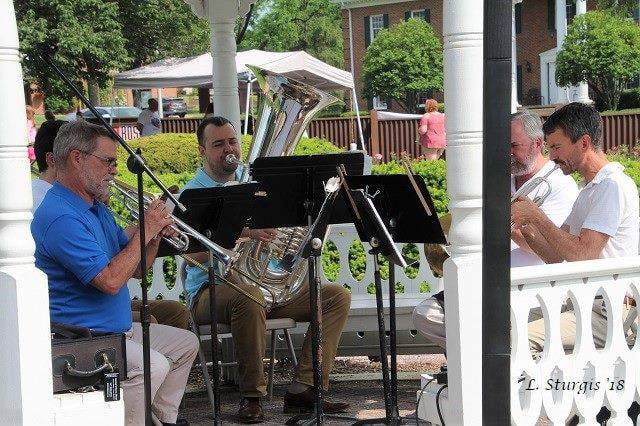
Garden, Park, Relax in park
Address: 2519 E Main St, 47374-5864 Richmond
Joseph Moore Museum of Natural History
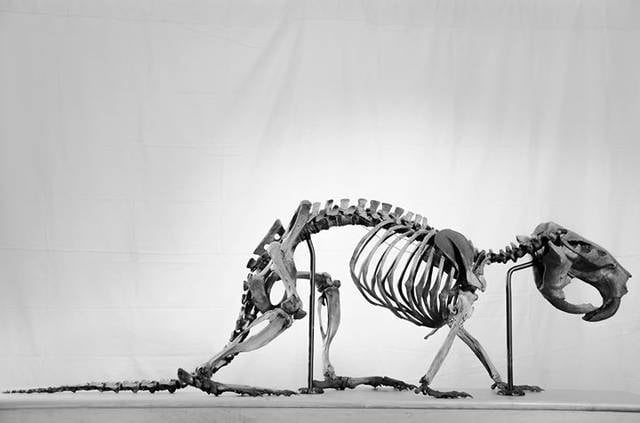
History museum, Museum
Address: 801 National Rd W, 47374-4095 Richmond
Abram Gaar House and Farm

Building. The Abram Gaar House and Farm or known as the Gaar Mansion is a wooden Second Empire-style farm home located in Richmond, Indiana, built in 1876 and listed on the National Register of Historic Places.
The home was built by industrialist Abram Gaar, president of Gaar-Scott and Company, manufacturers of steam engines and threshing machines from 1842 to 1911. Total construction cost of the home was $20,000 it took eight months to build. The house is situated on a rise overlooking the city of Richmond from the north. Gaar hired John A. Hasecoster, the area's leading architect of the day to design the house and his original plans drawn on linen sheets are on display at the house today.[6]
Bethel A.M.E. Church
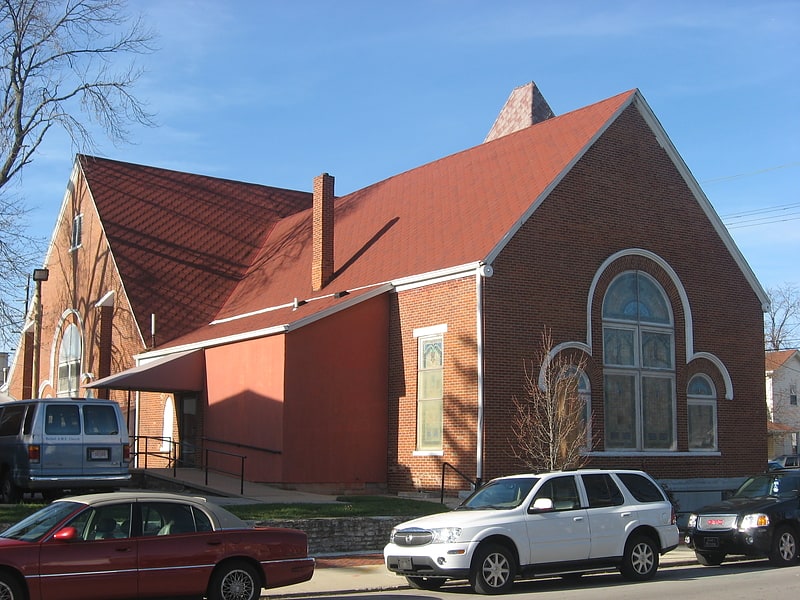
Place of worship in Richmond, Indiana. Bethel A.M.E. Church is a historic African Methodist Episcopal church located at Richmond, Wayne County, Indiana. The congregation was founded in 1836. The church was built in 1854, and enlarged and remodeled in the Romanesque Revival style in 1892–1894. It is a one-story, cruciform plan, brick building with a 2+1⁄2-story bell tower. The church serves as an educational, political, and cultural center for the local African-American community.
It was listed on the National Register of Historic Places in 1975.[7]
Leland Hotel
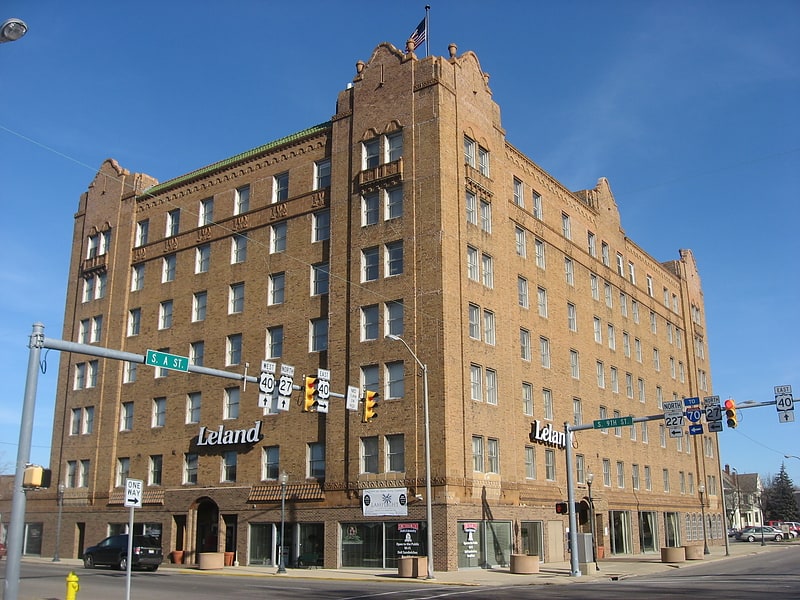
Leland Hotel, also known as the Leland Motor Inn, is a historic hotel building located at Richmond, Wayne County, Indiana. It was built in 1928, and is a seven-story, "U"-shaped, Mission Revival style reinforced concrete building sheathed in light brown brick dwelling. The building was modernized in the mid-1960s and removed or covered many of the original details. It is the tallest building in Richmond.
It was listed on the National Register of Historic Places in 1985.[8]
Address: 900 S A St, 47374-5558 Richmond
Murray Theater
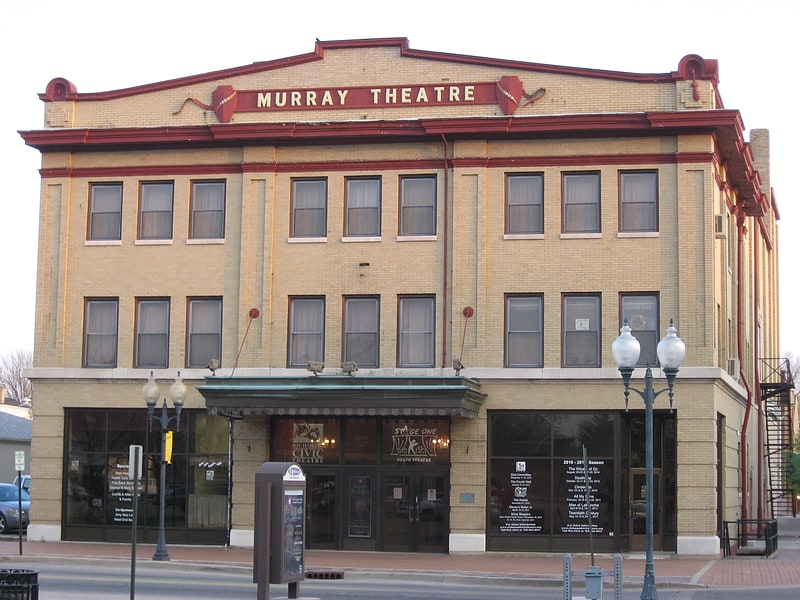
Theater. Murray Theater, also known as the Richmond Civic Theater-Norbert Silbiger Theater, is a historic theatre building located at Richmond, Wayne County, Indiana. It was built in 1909, and is a three-story, steel frame and brick building with Chicago School and Beaux-Arts style design influences. The auditorium was originally designed to seat 751.
It was listed on the National Register of Historic Places in 1982.[9]